The Codex Floriacensis, designated by h in traditional system or by 55 in the Beuron system, is a 6th-century Latin manuscript of the New Testament. The text, written on vellum, is a palimpsest. Another name of the manuscript is Fleury Palimpsest or Palimpsestus Floriacensis. [1] It is one of the eight Old-Latin manuscripts with text of Apocalypse. [2]
The manuscript contains the text of the New Testament except the four Gospels and the Pauline epistles with numerous lacunae. 33 parchment leaves from the original 193 have survived. The size of the pages is 24 by 18 cm. [3]
The order of books (probably): Book of Revelation, Book of Acts, 1- 2 Peter, and 1 John. [1]
The Latin text of the codex represents the Old-Latin version in Afra recension.
Revelation 1:1-2:1; 8:7-9:12; 11:16-12:5; 12:6-14; 14:15-16:5; Acts 3:2-4:18; 5:23-7:2; 7:42-8:2; 9:4-23; 14:5-23; 17:34-18:19; 23:8-24; 26:2-27:13; 1 Peter 4:17-5:14; 2 Peter 1:1-2:6; 1 John 1:8-3:20. [3]
It contains many scribal errors. The text of Acts 28:1-13 is summarized. In Book of Acts there are only 10 differences with the text of Acts quoted in the Testimonia of Cyprian. [1] There are also some textual similarities with Codex Glazier. [4]
Gregory dated the manuscript to the 7th century, [3] Bruce M. Metzger to the 5th century. [1]
It is a palimpsest, the upper later text contains various treatises of Boetius and Isidore of Seville. [3]
According to the inscription on folio 130 it belonged in the 11th century to the famous Benedictine Abbey of Fleury on the Loire (hence name of the codex). [5]
The text of the codex was examined by Constantin von Tischendorf (text of Apocalypse), [3] Hans von Soden examined the text of the Acts, Edgar S. Buchanan examined the text of the Apocalypse and Acts. [6] Sabatier collated the first three pages. Johannes Belsheim published some fragments in 1887, and Samuel Berger published a complete text of the codex in 1889. [7]
The codex is located in the Bibliothèque nationale de France (Lat. 6400 G) at Paris. [1]
The New Testament (NT) is the second division of the Christian biblical canon. It discusses the teachings and person of Jesus, as well as events relating to first-century Christianity. The New Testament's background, the first division of the Christian Bible, is called the Old Testament, which is based primarily upon the Hebrew Bible; together they are regarded as sacred scripture by Christians.
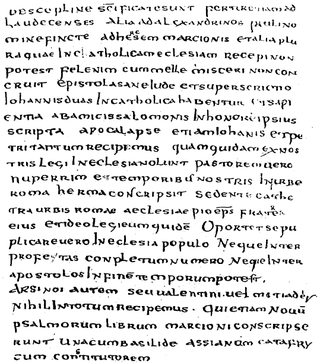
The Muratorian fragment, also known as the Muratorian Canon, is a copy of perhaps the oldest known list of most of the books of the New Testament. The fragment, consisting of 85 lines, is a Latin manuscript bound in a roughly 8th-century codex from the library of Columbanus's monastery at Bobbio Abbey; it contains features suggesting it is a translation from a Greek original written about 170. Other scholars suggest it might have been originally written as late as the 4th century, although this is not the consensus opinion. Both the degraded condition of the manuscript and the poor Latin in which it was written have made it difficult to translate. The beginning of the fragment is missing, and it ends abruptly. The fragment consists of all that remains of a section of a list of all the works that were accepted as canonical by the churches known to its original compiler.

The Codex Alexandrinus, designated by the siglum A or 02, δ 4, is a manuscript of the Greek Bible, written on parchment. Using the study of comparative writing styles (palaeography), it has been dated to the fifth century. It contains the majority of the Greek Old Testament and the Greek New Testament. It is one of the four Great uncial codices. Along with Codex Sinaiticus and Vaticanus, it is one of the earliest and most complete manuscripts of the Bible.

The Codex Ephraemi Rescriptus designated by the siglum C or 04, δ 3, is a manuscript of the Greek Bible, written on parchment. It contains most of the New Testament and some Old Testament books, with sizeable portions missing. It is one of the four great uncials. The manuscript is not intact: its current condition contains material from every New Testament book except 2 Thessalonians and 2 John; however, only six books of the Greek Old Testament are represented. It is not known whether 2 Thessalonians and 2 John were excluded on purpose, or whether no fragment of either epistle happened to survive.

Codex Claromontanus, symbolized by Dp, D2 or 06 (in the Gregory-Aland numbering), δ 1026 (von Soden), is a Greek-Latin diglot uncial manuscript of the New Testament, written in an uncial hand on vellum. The Greek and Latin texts are on facing pages, thus it is a "diglot" manuscript, like Codex Bezae Cantabrigiensis. The Latin text is designated by d (traditional system) or by 75 in Beuron system.
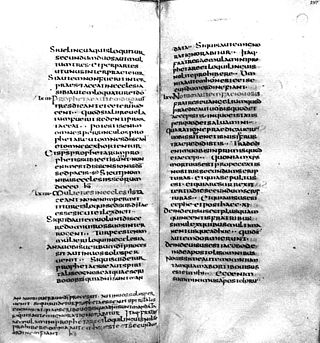
The Codex Fuldensis, also known as the Victor Codex, designated by F, is a New Testament manuscript based on the Latin Vulgate made between 541 and 546. The codex is considered the second most important witness to the Vulgate text; and is also the oldest complete manuscript witness to the order of the Diatessaron. It is an important witness in any discussion about the authenticity of 1 Corinthians 14:34–35 and the Comma Johanneum. It is one of the earliest dated manuscripts of the New Testament. It was corrected until 2 May, 546 AD.
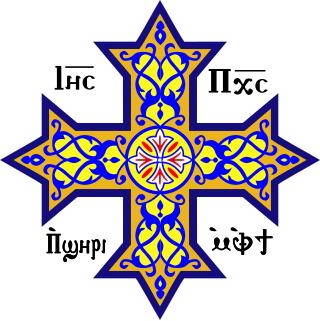
There have been many Coptic versions of the Bible, including some of the earliest translations into any language. Several different versions were made in the ancient world, with different editions of the Old and New Testament in five of the dialects of Coptic: Bohairic (northern), Fayyumic, Sahidic (southern), Akhmimic and Mesokemic (middle). Biblical books were translated from the Alexandrian Greek version.
A biblical manuscript is any handwritten copy of a portion of the text of the Bible. Biblical manuscripts vary in size from tiny scrolls containing individual verses of the Jewish scriptures to huge polyglot codices containing both the Hebrew Bible (Tanakh) and the New Testament, as well as extracanonical works.

Codex Porphyrianus designated by Papr or 025, α 3, is a Greek uncial manuscript of the Acts of Apostles, Pauline epistles, and General epistles, with some lacunae, dated paleographically to the 9th century. It is one of a few uncial manuscripts that include the Book of Revelation.
The Codex Athous Laurae, designated by Ψ or 044, or δ 6, is a manuscript of the New Testament written in Greek uncial letters on parchment. The manuscript has many gaps in the text, as well as containing handwritten notes. Using the study of comparative writing styles (palaeographically), the codex is dated to the 8th or 9th century.

Minuscule 33, δ 48 (Soden), before the French Revolution was called Codex Colbertinus 2844. It is a Greek minuscule manuscript of the New Testament on parchment, dated palaeographically to the 9th century. The manuscript is lacunose. It has marginalia. According to the textual critics it is one of the best minuscule manuscripts of the New Testament.

Vindobonensis Suppl. Gr. 52, also known as Minuscule 3, or δ 253, is a Greek minuscule manuscript of the New Testament, written on vellum. Using the study of comparative writing styles (palaeography), it has been dated to the 12th century. It was one of the manuscripts used by biblical scholar Desiderius Erasmus Roterodamus in his edition of the Greek text of the New Testament.

Syriac is a dialect of Aramaic. Portions of the Old Testament were written in Aramaic and there are Aramaic phrases in the New Testament. Syriac translations of the New Testament were among the first and date from the 2nd century. The whole Bible was translated by the 5th century. Besides Syriac, there are Bible translations into other Aramaic dialects.
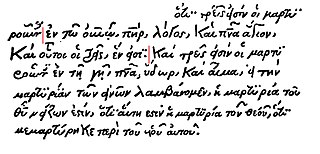
Codex Montfortianus designated by 61, δ 603, and known as Minuscule 61 is a Greek minuscule manuscript of the New Testament on paper. Erasmus named it Codex Britannicus. Its completion is dated on the basis of its textual affinities to no earlier than the second decade of the 16th century, though a 15th-century date is possible on palaeographic grounds. The manuscript is famous for including a unique version of the Comma Johanneum. It has marginalia.
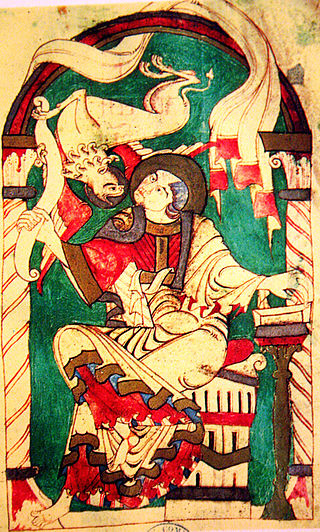
The Codex Corbeiensis I, designated by ff1 or 9, is an 8th, 9th, or 10th-century Latin New Testament manuscript. The text, written on vellum, is a version of the old Latin. The manuscript contains 39 parchment folios with the text of the four Gospels, Acts of the Apostles, and General epistles.
The Codex Corbeiensis II, designated by ff2 or 8, is a 5th-century Latin Gospel Book. The text, written on vellum, is a version of the old Latin. The manuscript contains 190 parchment folio with the text of the four Gospels with lacunae. Written in a beautiful round uncial hand.
The Codex Sangermanensis I, designated by g1 or 7, is a Latin manuscript, dated AD 822 of portions of the Old Testament and the New Testament. The text, written on vellum, is a version of the Latin. The manuscript contains the Vulgate Bible, on 191 leaves of which, in the New Testament, the Gospel of Matthew contain Old Latin readings. It contains Shepherd of Hermas.
Minuscule 522, ε 145, is a Greek minuscule manuscript of the New Testament, on a paper. It is dated by a colophon to the year 1515 or 1516. Scrivener labelled it by number 488. It was adapted for liturgical use.
The León Palimpsest, designated l or 67, is a 7th-century Latin manuscript pandect of the Christian Bible conserved in the cathedral of León, Spain. The text, written on vellum, is in a fragmentary condition. In some parts it represents the Old Latin version, while following Jerome's Vulgate in others. The codex is a palimpsest.

Vetus Latinamanuscripts are handwritten copies of the earliest Latin translations of the Bible, known as the "Vetus Latina" or "Old Latin". They originated prior to Jerome from multiple translators, and differ from Vulgate manuscripts which follow the late-4th-century Latin translation mainly done by Jerome.